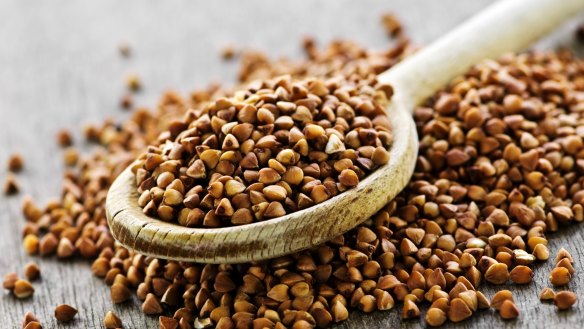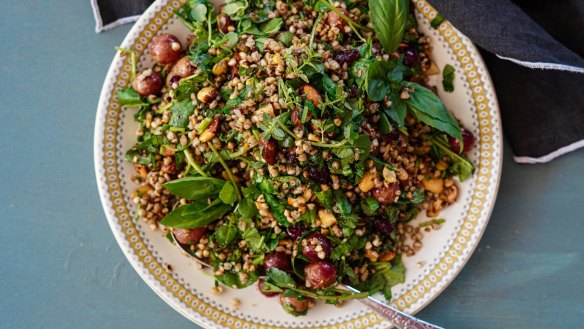Buckwheat: Everything you need to know

- Sprouted buckwheat salad and three other nourishing recipes from wholefoods cafe Egg of the Universe
What is it?
To botanists, it is a pseudo-cereal; to the Germans, it is Buckweizen, and to the Japanese, it's soba. The small grain-like seeds of plant related to rhubarb and sorrel, buckwheat thrives in soils where true grains like wheat and barley wither, making it traditionally food of the poor. Originating in southeast Asia, buckwheat found its way to Russia in the Middle Ages and Western Europe by the Renaissance. Because buckwheat is gluten-free, it does not lend itself to light breads or fluffy cakes. Instead, you'll find a wealth of flatbread and pancake recipes using buckwheat flour, including Buchweizenpfannkuchen (Germany), blini (Russia) and galettes de sarrasin (France), along with sweet and savoury porridge-style dishes. And soba noodles, made from buckwheat flour, are popular throughout Japan.
Why do we love it?
It has a nutty, earthy flavour, is packed with fibre, has a low GI and contains no gluten. A diet that contains regular consumption of buckwheat has been linked to the control of high blood pressure in some Chinese studies. Raw buckwheat is becoming popular in cafe menus, which are serving it as an alternative to rice and cracked wheat in salads. Buckwheat flour is being used by bakers to make Northern European-style gluten-free cakes, savoury biscuits, and breads. One hundred per cent buckwheat soba noodles are being used in myriad dishes, from soups to cold salads.

Who uses it?
One of Central Victoria's micro-bakers Simon Matthee from The Millett Road Maker Sourdough Bakery in Gisborne, mills his own buckwheat into a fine flour and adds this to his stoneground whole wheat flour. "Surprisingly, the slighter darker buckwheat flour brightens the crumb of the loaf, gives it this magic white appearance," he says. "At the same time, it improves the nutrition of the loaf, and the crust bakes to a really deep brown, almost black." Sydney chef Anthony Telford has just released his new book The Kitchen Think and says: "I am gluten intolerant, so I am always trying to find alternatives. I swap out pearl cous cous and bulgar wheat for buckwheat. I roast buckwheat low and slow, grind it coarsely and use it in Thai larb salad." He uses buckwheat raw in muesli alongside cocoa nibs, giving his breakfast a Coco Pops vibe.
How do you use it?
Cook raw buckwheat like one would oats to make a nutty porridge. Be like the Scandinavians and serve it with forest berries and honey. Simmer buckwheat with three cups of water to everyone one cup of the groats with a pinch of salt and knob of butter. Make this a base for a salad and add herbs, greens, chopped colourful veg, and finish with a simple vinaigrette. Make a cake with almond meal and buckwheat flour and fill with whipped cream and tart fruit jam.
Where do you get it?
Raw buckwheat is available in supermarkets and food stores. If a recipe calls for roasted buckwheat, or kasha, try European delis and good food stores. Most buckwheat is imported but go to bio-oz.com.au for Australian buckwheat grown by Australian farmers.
Suggest an ingredient via email to brainfood@richardcornish.com.au or tweet to @foodcornish.
Appears in these collections
Restaurant reviews, news and the hottest openings served to your inbox.
Sign upMore:
From our partners
Original URL: https://www.smh.com.au/goodfood/eating-out/buckwheat-everything-you-need-to-know-20211005-h1yzvj.html
